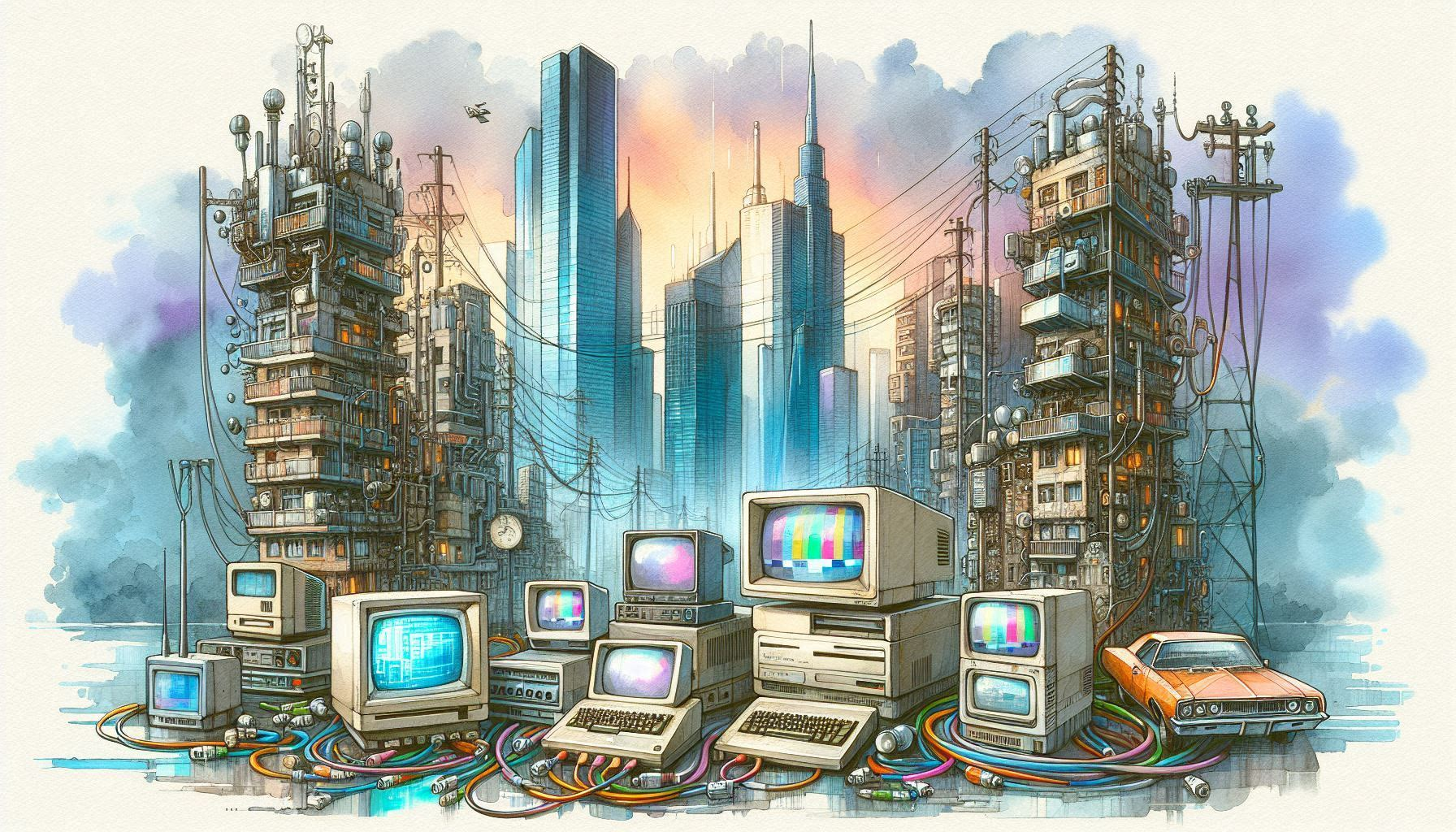The digital age is characterized by relentless innovation. While technological advancements propel us forward, they also present a significant challenge for digital infrastructure. This infrastructure, the physical foundation of our connected world, can rapidly become obsolete as new technologies emerge. This article explores the consequences of technological obsolescence in digital infrastructure and proposes strategies for building resilient and future-proof systems.
Falling Behind: The Costs of Technological Obsolescence
When digital infrastructure fails to keep pace with advancements, several issues arise:
-
Reduced Performance and Capacity: Outdated infrastructure may struggle to handle the demands of newer technologies, leading to slower internet speeds, limited bandwidth, and increased downtime.
-
Security Vulnerabilities: Legacy systems may not be equipped with the latest security patches, leaving them susceptible to cyberattacks and data breaches.
-
Compatibility Issues: New technologies may not be compatible with older infrastructure, hindering integration and innovation.
-
Increased Costs: Maintaining and repairing outdated equipment can be expensive. Replacing obsolete infrastructure altogether requires significant capital investment.
-
Innovation Stifled: Limited infrastructure capabilities can impede the adoption of new technologies and services, stifling innovation and economic growth.
These consequences can have a ripple effect, impacting individuals, businesses, and entire economies.
The Looming Chasm: Examples of Technological Obsolescence in Action
Here are some real-world examples of how technological obsolescence affects digital infrastructure:
-
Copper vs. Fiber Optic Cables: Copper cables, widely used for internet access, struggle to keep pace with the growing demand for high-speed bandwidth. Fiber optic cables offer superior speed and capacity, but upgrading entire networks requires significant investment.
-
Aging Cellular Networks: As mobile data consumption increases, older cellular network technologies like 2G and 3G become insufficient. Upgrading to 4G and 5G networks is crucial for supporting mobile broadband services.
-
Legacy Enterprise Systems: Many businesses rely on outdated enterprise software that may not be compatible with cloud computing or mobile technologies, hindering efficiency and agility.
These examples highlight the urgency of addressing technological obsolescence to maintain a robust and future-proof digital infrastructure.

Building Bridges: Strategies for Future-Proofing Digital Infrastructure
Building resilient digital infrastructure requires a proactive approach:
-
Future-Proof Design: When designing new infrastructure, consideration should be given to scalability, upgradability, and compatibility with emerging technologies.
-
Standardization and Interoperability: Adopting common standards enables easier integration of new technologies with existing infrastructure.
-
Regular Upgrades and Maintenance: Developing a lifecycle management plan for infrastructure ensures timely upgrades and proactive maintenance to minimize downtime and security risks.
-
Investment in Research and Development: Continuous investment in research and development of new infrastructure technologies is essential to stay ahead of the curve.
-
Public-Private Partnerships: Collaboration between governments and private companies can leverage expertise and resources to accelerate infrastructure upgrades.
By implementing these strategies, stakeholders can build digital infrastructure that is resilient, adaptable, and capable of supporting the needs of a rapidly evolving digital world.
A Continuous Journey
Technological obsolescence is an ongoing challenge in the digital age. However, by embracing future-proof design, standardization, and continuous investment, stakeholders can build resilient digital infrastructure that can adapt and evolve.
Here are some additional considerations for a sustainable digital future:
-
Digital Literacy and Skills Development: Equipping citizens with the skills to utilize and maintain digital infrastructure is crucial. This includes training programs on cybersecurity, data privacy, and responsible use of technology.
-
E-waste Management: Obsolete equipment needs to be disposed of responsibly to minimize environmental impact. Developing efficient e-waste management systems is essential for a circular economy in the digital sphere.
-
The Rural-Urban Divide: The gap in digital infrastructure access between urban and rural areas needs to be addressed. Targeted investments and innovative solutions are required to bridge this divide and ensure equitable access to the benefits of digital technologies.
-
Ethical Considerations: As digital infrastructure becomes more sophisticated, ethical considerations regarding data privacy, net neutrality, and access to information come to the forefront. Developing robust policy frameworks is crucial to ensure responsible and ethical use of digital infrastructure.
The future of digital infrastructure lies in a collaborative effort. Governments, businesses, citizens, and academia all have a role to play in building and maintaining a digital foundation that is:
-
Inclusive: Providing equitable access to digital technologies for all.
-
Sustainable: Minimizing environmental impact and promoting responsible resource utilization.
-
Secure: Protecting data privacy and safeguarding against cyber threats.
-
Scalable and Adaptable: Continuously evolving to meet the demands of a rapidly changing digital landscape.
By working together and embracing a forward-thinking approach, we can build a digital infrastructure that empowers individuals, fosters innovation, and propels societies towards a brighter and more connected future. The journey towards a future-proof digital world is a continuous one, requiring ongoing innovation, collaboration, and a commitment to building a digital infrastructure that serves the needs of present and future generations.
